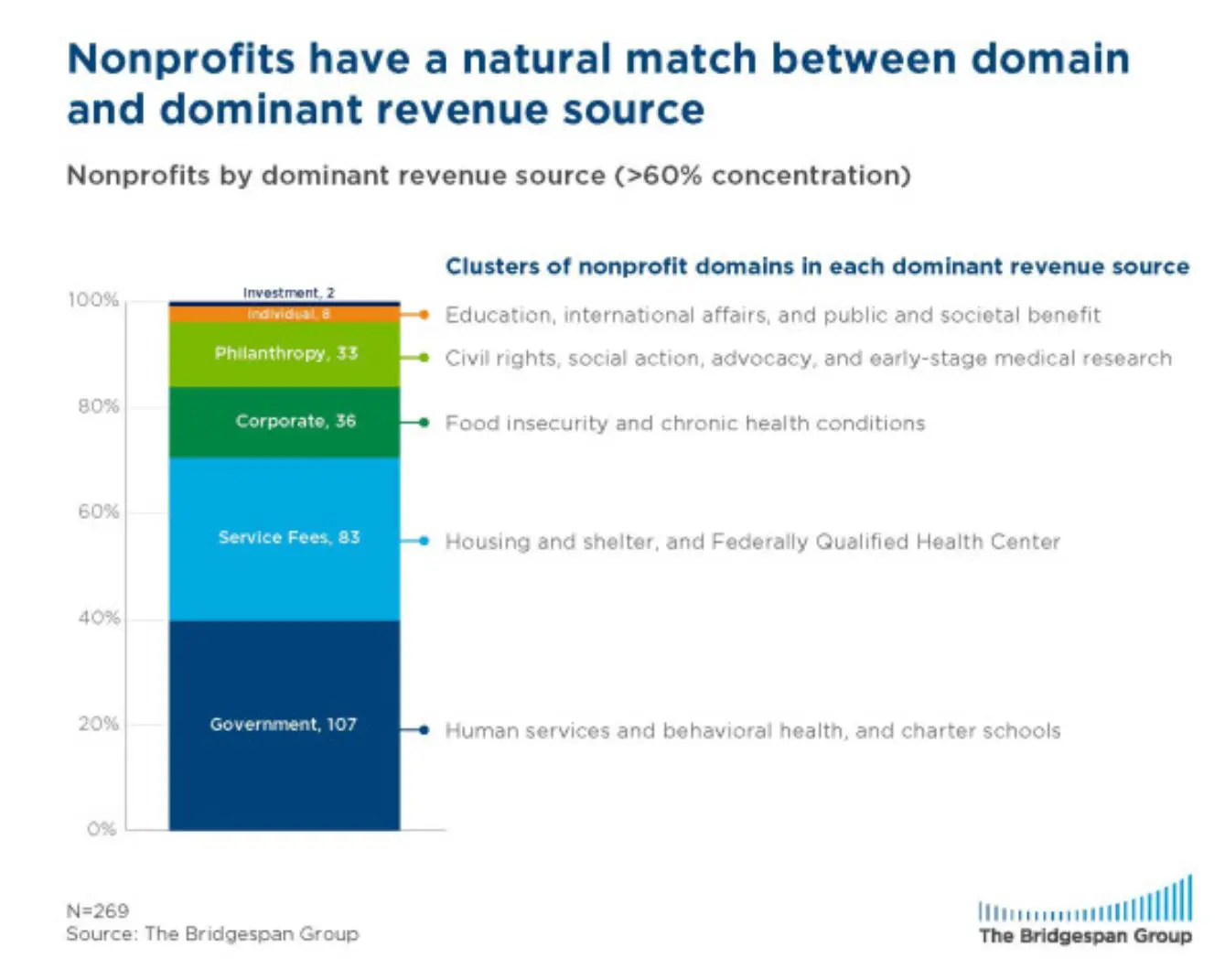Concentration Instead of Diversification: Why NGOs Should Focus on Fewer Revenue Streams (US Study)
For many NGOs and nonprofit organizations in Europe, diversifying revenue sources has been considered the golden path to financial success. The common view is that the more diverse the revenue streams, the more stable and sustainable the organization’s financial foundation becomes. However, a new study from the US challenges this principle. The research reveals that concentrating on one or at most two revenue streams can be the key to significant growth.
Study Overview
The study, conducted by Bridgespan, is based on an analysis of 297 US-based NGOs founded since 1990, all of which now generate over $50 million in annual revenue. The findings are striking. A similar study from 2007 already highlighted that over 90 percent of “truly large” NGOs received the majority of their funds (60%) from a single category of donors, such as corporations or government entities. This trend has hardly changed over time.
The current analysis also shows that 269 out of 297 organizations – over 90 percent – have a dominant revenue stream that accounts for at least 60 percent of their total income. Notably, government funding, sales revenues, and corporate donations remain the most significant categories, while the role of philanthropy as a dominant revenue source has increased. Nearly half of the organizations surveyed operate in the health or education sectors.

What Does This Mean for European NGOs?
The study suggests that focusing on a few, but strong, revenue streams can be an effective way for nonprofit organizations to grow. Rather than spreading resources across many different sources, European NGOs may benefit from concentrating their efforts on one or two main revenue streams.
Here’s a closer look at the top revenue sources identified in the study:
1.Government Funding: For many NGOs, especially in education and social services, government funding is a natural and stable source of financing. Governments are often willing to pay for services that serve the public interest but are not provided directly by government agencies. For organizations in these areas, it might be strategic to specialize in securing government grants and building expertise in lobbying and technical proposal writing. For 40% of the NGOs in the study, government funding is the number one revenue source.
2. Sales Revenues: Services that users are willing to pay for (e.g., consulting, workshops, etc.) offer another promising revenue stream, particularly for NGOs in the education and healthcare sectors. These organizations should strengthen their product development, pricing strategies, and marketing skills to maximize this revenue stream. In fact, 30% of the organizations studied generate the majority of their funding through this source.
3. Corporate Donations: Corporate donations provide a solid foundation, particularly in the form of in-kind donations, such as free advertising space or medical supplies. Organizations should pursue strategic partnerships with companies willing to provide materials or services needed for their projects. 14% of the NGOs in the study cite corporate donations as their primary funding source.
4. Philanthropy: An interesting development is the growing importance of large donations (over $10,000) from foundations and individuals. NGOs that focus on philanthropy as their main revenue source should cultivate long-term relationships with major donors and secure multi-year financial commitments. Without this focus, they risk financial instability. Organizations that address issues like justice and social change, in particular, could benefit from this funding. For 12% of the NGOs in the study, philanthropy has become particularly important, compared to just 2% in the 2007 study.
Building the Right Skills and Infrastructure
The study emphasizes that it’s not just about identifying the right revenue source for the organization, but also about building the necessary skills and infrastructure to tap into that source effectively. For example, organizations successful in securing government funds often excel in lobbying, precise grant writing, and strict compliance with regulations. In contrast, raising small donations requires strong brand communication, marketing expertise, and professional payment processing. More information on different funding sources can be found here: Bridgespan: How Nonprofits Get Really Big
Conclusion: Less is More
For European NGOs aiming for significant growth, it may be worth reconsidering the diversification strategy. Concentrating on one or two strong revenue streams, coupled with building specialized expertise, could be the key to long-term success. This study shows that the recipe for success for many large US nonprofits lies in focus – an approach that could also be relevant for European organizations.
It’s time to focus on what you do best, find out who will pay for it, and specialize in optimizing that revenue stream. Less diversification, more focus – this could be the secret to sustainable success in fundraising.
Here’s the 2007 study: How Nonprofits Get Really Big
And the 2024 study: A New Look on How Nonprofits Get Really Big















